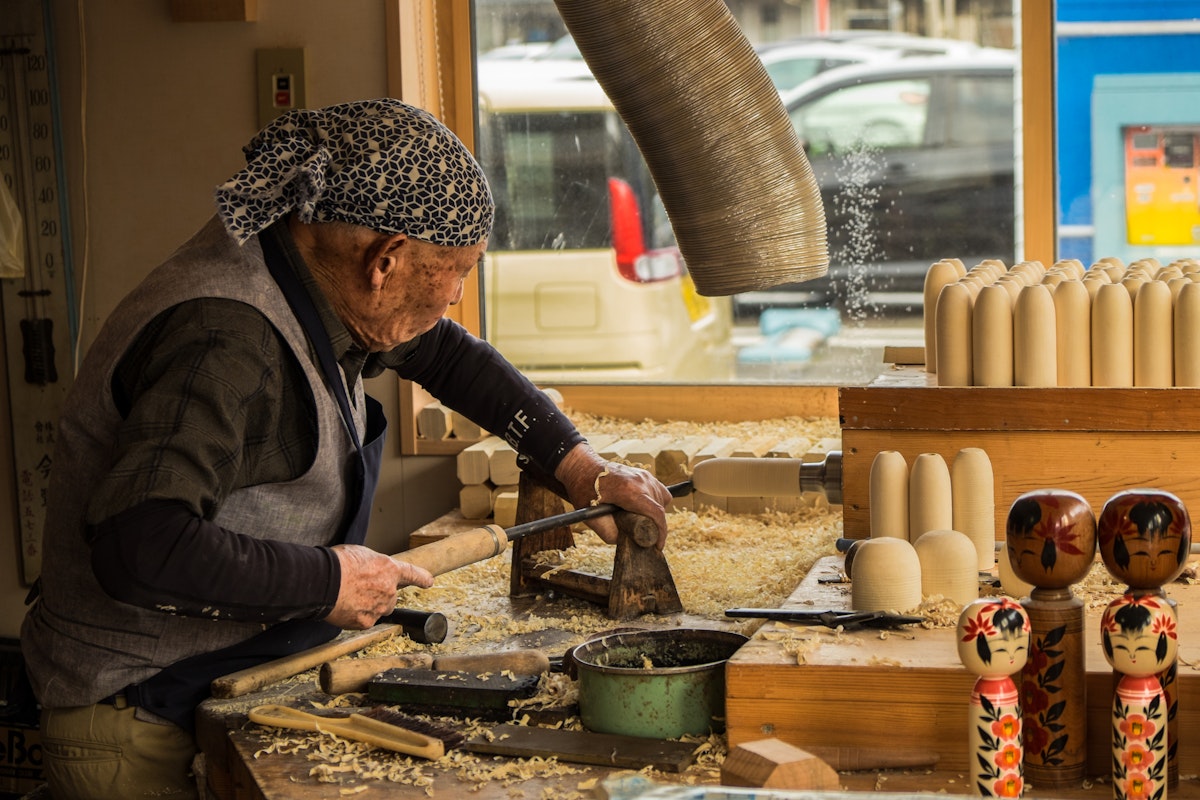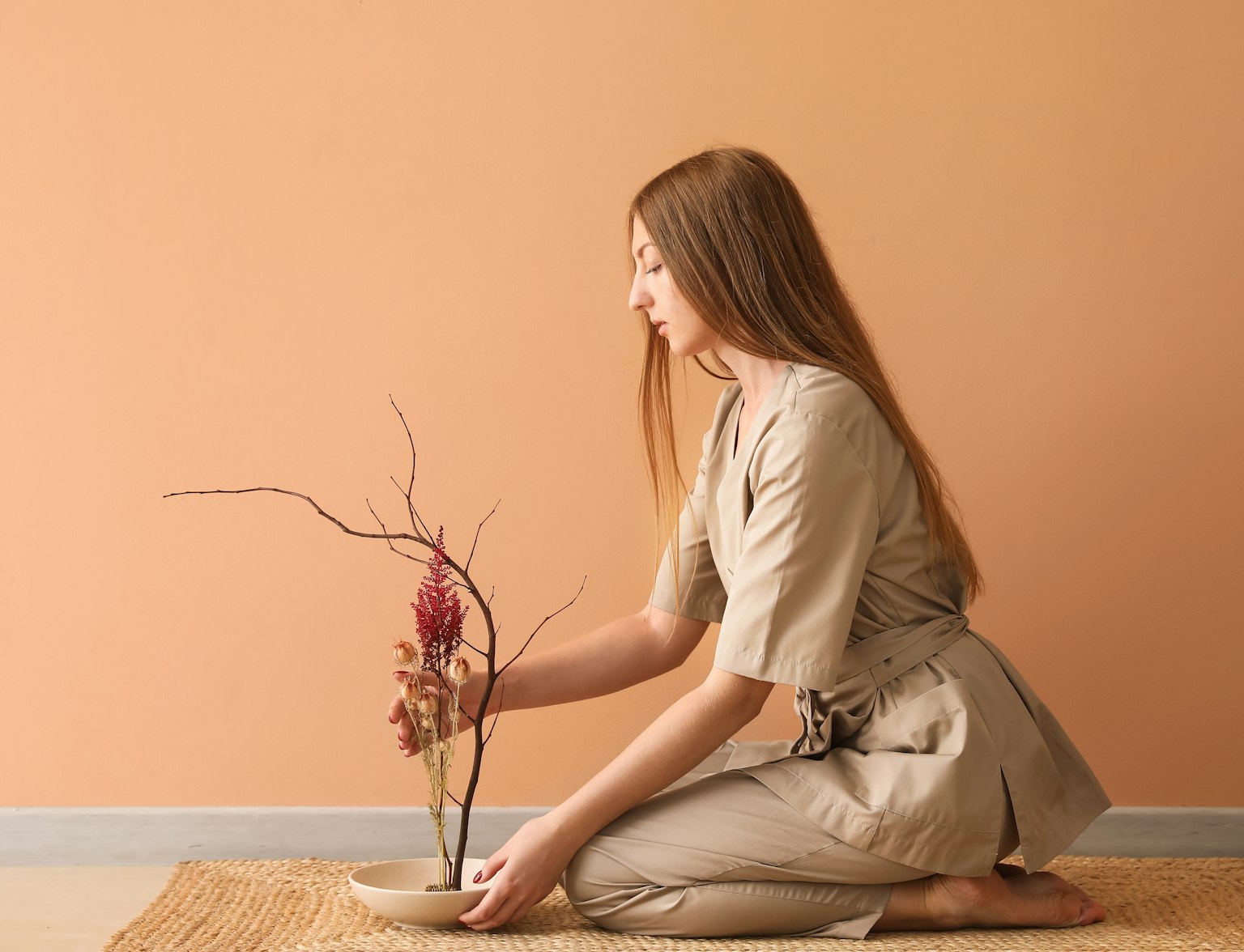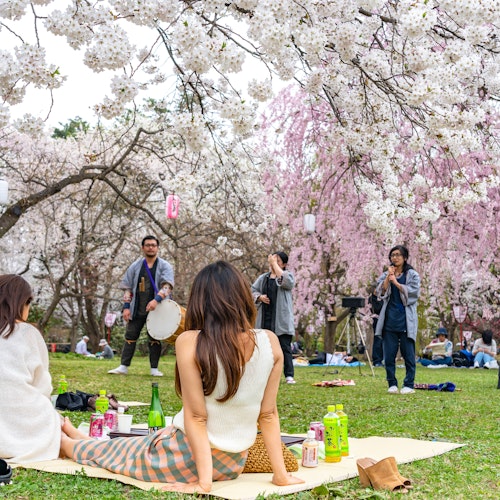

Visiting Japan offers a wide array of experiences, but one particularly unique and enriching opportunity is participating in hands-on workshops for artisanal souvenirs led by local artisans. These various workshops not only serve as an incredible way to understand the cultural intricacies of Japan but also offer travelers and locals alike the chance to create something memorable.
From origami folding to SAORI Weaving, craft workshops in Japan promise a unique blend of tradition and personal creativity.
A craft workshop is a class where you learn how to make different types of crafts under the guidance of an expert. These could range from pottery to indigo dyeing and even creating daruma dolls.
Workshops are often offered in many locations, including eco-friendly accommodations, providing travelers with a unique way to connect with local culture.
Japan is a hub for artistic and cultural crafts, making it a prime destination for learning traditional skills. The nation's rich history, dating back to the Edo period, contributes to the variety and quality of the crafts available.
Additionally, the cultural significance of artisanal souvenirs in Japan adds another layer of meaning to these workshops. Lastly, Japanese workshops are often centrally located within cities like Tokyo City, making them accessible for locals and travelers.

Uncover the artistry of Japanese craftsmanship with our immersive tours.

Suppose you want to immerse yourself in Japanese culture while honing a new skill. In that case, these 13 popular traditional crafts workshops offer a unique and enriching experience that connects you to centuries-old practices cherished across Japan.

Origami is a traditional Japanese art form that dates back to the 6th century, initially serving religious and ceremonial purposes. Over time, it has evolved into a popular educational and recreational activity, reflecting its lasting significance in Japanese culture.
Basic Folds and Patterns:
Mountain Fold: This is where you fold the paper back, creating a peak resembling a mountain.
Valley Fold: The opposite of a mountain fold, the paper is folded forward, creating a dip or "valley."
Pet Fold: A complex fold that involves tucking paper under and over itself, often used in more advanced designs.
Crane Pattern: You'll learn to fold the iconic origami crane, which symbolizes peace and longevity.
Boat Pattern: This pattern will teach you to fold a simple but stylish paper boat.
Popular Locations for Origami Workshops:
Tokyo City
Kyoto
Osaka
Hiroshima
How to Book an Origami Workshop:
Research Workshops by browsing the internet and looking through various available options.
Compare Prices by checking multiple workshops to find one financially suitable for you.
Read Reviews from previous participants to gauge the quality and satisfaction level of the workshop.
Book in Advance to secure your place and avoid disappointment.
Come Prepared with an open mind, ready to learn the ins and outs of this fascinating art form.

Discover the magic of origami in Tokyo's Asakusa neighborhood!

Japanese sword-making, known as "Katanakaji," is an art form that merges functionality and beauty, rooted deeply in the country's history. Initially developed for samurais in ancient Japan, these swords are more than weapons; they are cultural treasures that embody the samurai spirit.
Popular Regions for Sword-making Workshops:
Seki City, Gifu
Osaka City, Osaka
Kanagawa Prefecture
Tips and Recommendations:
Wear heat-resistant clothes.
Pay close attention to the instructor.
Confirm all materials are provided before booking.

Taiko drumming is not just a musical activity; it's a dynamic form of full-body exercise and an essential facet of Japan's cultural heritage. The sounds of the Taiko drums have traditionally been intertwined with various Japanese religious ceremonies, festivals, and historical events.
Types of Taiko Drums Used:
Shime-daiko: A smaller, tensioned drum often used for high-pitched notes.
Nagadō-daikon: This barrel-shaped drum is the most commonly used and offers medium-range tones.
O-daiko: Known for its deep tones, the O-daiko is an impressively large drum often featured in performances.
In a Taiko workshop, you can expect to learn the basics of drumming, including different rhythmic patterns and ensemble coordination. You'll often conclude the class by participating in a group performance of a simple Taiko piece.
Taiko drumming classes are widely available in many locations, including Tokyo City. Online booking platforms or cultural centers often provide options to book a workshop.

Your journey to the heart of Japan's soulful beats starts here!

Tofu is much more than a simple food item in Japan; it's a symbol of the culinary culture, widely revered for its purity and versatility. It is derived from soybeans and has been essential to Japanese meals for centuries.
The Process of Making Tofu:
1. Soak the soybeans overnight to soften them.
2. Blend the softened beans and strain the mixture to extract fresh soy milk.
3. Boil the soy milk to sterilize it.
4. Add a coagulating agent to the boiled soy milk and allow it to set, forming tofu.
You'll usually be provided with all the necessary ingredients and tools in a typical workshop. The class often ends with participants being satisfied with taking home the tofu they made themselves.
Tofu-making workshops are often located in rural areas famous for soybean farming. Booking is usually straightforward—contact the workshop via their website or phone, and they'll guide you through the process.

Engaging in sea urchin fishing and kelp harvesting is like stepping into a living tradition that stretches back for generations in Japanese coastal communities. These workshops offer a glimpse into local livelihoods and highlight the delicate balance of marine ecology.
In these workshops, you will be thoroughly guided through the technical and ethical aspects of both sea urchin fishing and kelp harvesting. Expect to don specialized gear as you learn the ins and outs of these fascinating marine activities, including identifying mature kelp and sea urchins, proper harvesting techniques, and responsible fishing practices to protect the ecosystem.
These unique marine workshops are commonly held in coastal regions known for their rich marine biodiversity, such as the Okinawa islands and the Izu Peninsula.
What to Bring and Practical Tips:
Weather-appropriate clothing is essential as coastal weather can be unpredictable.
Non-slip shoes are a must for walking on wet surfaces.
A camera in a waterproof case allows you to capture special moments without worrying about water damage.
Reservations for these workshops can be made via specialized marine activity centers. A simple phone call or online booking form is often all it takes to secure a spot.

Mochi is more than just a food in Japan; it's a cultural emblem, deeply integrated into various ceremonies and festivals. Making mochi, known as "Mochi-tsuki," is often a communal event, symbolizing unity and cooperation.
How to Make Mochi-tsuki:
1. Steam glutinous rice until it's soft.
2. Pound the steamed rice in a large mortar using a mallet.
3. Once the rice becomes sticky, start shaping it into mochi balls.
4. Finally, you can fill or coat the mochi balls as desired.
Mochi-tsuki is often performed during festivals and family gatherings, highlighting its role in fostering community ties. It's trendy during the New Year's celebrations.
Cultural centers often organize mochi-making workshops, especially prevalent in rural areas where rice farming is common. Booking a Mochi-tsuki workshop is usually straightforward.
Many locations even allow walk-ins. Participants generally leave with their handmade mochi and a deeper appreciation of this cultural practice.

Witness a mochi-pounding session at Nakatanidou.

Japanese calligraphy, also known as "Shodo," is an art form that turns writing into a visual spectacle. The delicate balance between ink, brush, and paper makes Shodo an intricate practice deeply rooted in Japanese culture.
Many workshops are held on the first floor of cultural centers, providing easy access for participants. In a Shodo workshop, you'll learn essential strokes like horizontal lines, vertical lines, and sweeping curves.
You'll also practice forming kanji and kana characters. Shodo is not just highly respected in Japan, but it's also a path to achieving inner peace.
This art is more than just writing; it's a spiritual exercise that helps cultivate character and tranquility. Expect to sit at a traditional low table and practice your strokes with a brush, ink, and specially designed calligraphy paper.
These workshops usually last 1-2 hours and are a great way to dive deep into Japanese culture.
Tips for Interested Participants:
Bring a focused mindset: Concentration is critical in calligraphy.
Dress comfortably: You'll be sitting for a while.
Respect the tools: Brushes and paper are considered sacred in Shodo.

Unlock the secrets of stroke and ink under expert guidance.

Silk dyeing is an age-old practice that plays a significant role in Japanese textile arts. This craft involves various techniques to produce beautiful patterns on silk fabric.
You'll learn techniques like dip-dyeing, tie-dyeing, and resist-dyeing. These methods contribute to the rich texture and intricate patterns on the silk.
Traditional silk dyeing, often associated with the Edo period, has deep roots in Japanese culture. It represents the culmination of various artistic influences and is considered a treasure in textile arts.
Workshops are offered in various locations, including cultural centers and specialized textile schools. These are hands-on sessions where you get to dye your own piece of silk.
Practical Tips and How to Book:
Wear old clothes: Dye can get messy.
Ask questions: Understand the significance of each technique.
Booking: Usually requires pre-registration due to the limited availability of materials.

Experience the beauty of Arimatsu and discover the centuries-old art of Shibori tie-dyeing.

Ikebana is a traditional Japanese art form beyond simply putting flowers in a vase. It involves a deep understanding of balance, harmony, and the natural shapes of plants.
Ikebana originated in the 7th century and is grounded in a philosophy that seeks to create a harmonious relationship between human beings and nature.
In an Ikebana workshop, you'll learn the basic principles such as balance, harmony, and seasonal themes. These principles guide the arrangement and choice of flowers and plants.
Popular Ikebana Schools:
Sogetsu School
Ikenobo School
Ohara School
Booking a Workshop and Tips:
Book in Advance: Ikebana classes are popular.
Bring a camera: You'll want to remember your creation.

Dive into the heart of Tokyo's Yanaka district with an intimate Ikebana workshop.

Soba noodles are more than just food; they are an essential part of Japanese culture. These buckwheat noodles are both nutritious and versatile.
Soba noodles are deeply integrated into Japanese meals and are particularly popular during New Year's celebrations.
1. Mixing buckwheat flour with water
2. Kneading the dough
3. Rolling and cutting
Soba noodles have historical significance in Japanese culture, often representing longevity and resilience. Workshops can be found in cities and rural areas alike, usually conducted by seasoned artisans.
Plan ahead: Workshops fill up quickly.
Dress comfortably: The process is hands-on.

Lacquerware is a traditional Japanese craft that uses lacquer to decorate and protect wooden wares. Lacquerware is wooden objects coated and decorated with lacquer to create functional and beautiful items.
You can find workshops in many locations, from cultural centers to specialized craft schools.
Techniques Used in Crafting Lacquerware:
1. Wood preparation
2. Applying the lacquer
3. Decoration and polishing
Materials Involved:
Wood
Lacquer
Decorative elements like gold leaf
What to Expect and How to Book:
Be patient: The lacquering process takes time.
Book early: These workshops are quite popular.

Washi paper is a Japanese paper known for its quality and durability. Crafted from native Japanese trees like Mulberry, this paper has a unique texture that sets it apart from ordinary paper.
Washi paper dates back to the 7th century and has been an integral part of Japanese art and culture. It has been used in various souvenirs that travelers often bring home.
Today, Washi is used in various forms like calligraphy, origami, and even digital printing, making it a popular item to bring home as a souvenir.
Workshops are available in places like Tokyo and Kyoto, where experts teach the craft. Here, you can make Washi paper to bring home as souvenirs.
Book early: Limited spots are often available.
Wear something old: You might get a little messy.

Explore the art of Japanese paper-making in an immersive washi tour.

SAORI weaving is more than just a craft; it expresses individuality and creativity. You can even make fabric for your own t-shirt, making it a unique souvenir to bring home.
The philosophy of SAORI is founded on principles of spontaneity and improvisation, encouraging weavers to explore their creativity. You can even craft a t-shirt to bring home as a unique souvenir with your woven fabric.
In a workshop, you can create your own woven fabric, which can be used to make a t-shirt or other garments. Instructors guide you through the process but encourage your own artistic vision, allowing you to bring home a piece of fabric or a t-shirt as a unique souvenir.
Workshops are available in major cities and sometimes hosted by SAORI pioneers. Some even offer sewing classes where you can turn your woven fabric into a t-shirt.
Book through the website: Most workshops have online booking options.
Plan for multiple sessions: If you want to make t-shirts, multiple sessions may be required.

To ensure a rewarding and hassle-free experience, here are some practical tips to consider before and during your craft workshop.
Bring a camera to capture memories and any special tools if needed.
Opt for comfortable clothing that you don't mind getting a little dirty.
Check if the workshop offers any eco-friendly options like reusable materials.
Make sure to arrive early to get acclimated and meet the instructor.
Keep an open mind; some crafts may require a different skill set than you're used to.
Bring a small snack and water bottle to keep your energy levels up during the workshop.
If you have allergies or specific needs, inform the organizers in advance.
Take notes or make quick sketches to help remember fundamental techniques and tips.
If allowed, consider recording parts of the workshop for personal review later.
After the workshop, review and practice what you've learned to solidify the skills.
Craft workshops in Japan offer a unique and enriching experience, allowing you to dive deep into the country's rich cultural history. They are about learning a new skill, attaining inner peace, and contributing to sustainability.
These workshops are usually centrally located, making them convenient for travelers and locals alike. Don't miss the chance to learn how to make an artisanal souvenir that you can bring home—book your workshop today!

Unleash your creativity in Tokyo with a unique glass art workshop!



